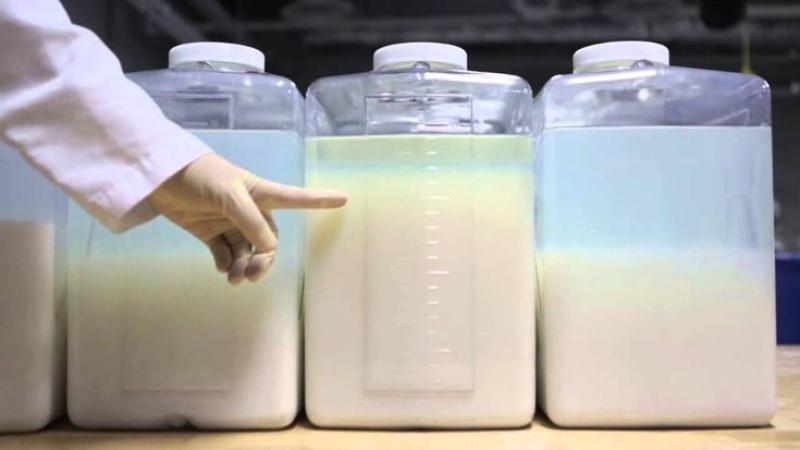Chemical Mechanical Planarization (CMP) slurry is a critical consumable used in the semiconductor manufacturing process, especially in wafer fabrication. CMP slurry plays an essential role in planarizing or polishing semiconductor wafers to achieve ultra-flat surfaces required for subsequent lithography steps. The slurry consists of chemically reactive agents combined with abrasive particles suspended in a liquid medium, making it indispensable in achieving precision surface smoothness. As semiconductor devices continue to shrink in size with increasing complexity, the demand and development of advanced CMP slurry formulations have intensified to meet high-precision manufacturing needs across the globe.
Detailed Composition and Functional Role of CMP Slurry in Wafer Polishing
CMP slurry is formulated with a combination of abrasive materials such as silica, alumina, or ceria particles, and chemical additives including oxidizers, corrosion inhibitors, and pH buffers. The abrasive particles mechanically wear down the wafer surface, while the chemical components induce controlled material removal through oxidation and other chemical reactions. This synergy allows for efficient planarization of multi-layered semiconductor wafers, enabling the even deposition and lithographic accuracy necessary for integrated circuit performance. Different slurry compositions are tailored for specific wafer materials, such as silicon dioxide, copper, tungsten, or low-k dielectrics, ensuring removal rates and surface finishes meet tight process specifications.
The polishing process must maintain a delicate balance between aggressive material removal for throughput and gentle finishing to avoid surface defects such as dishing, erosion, or scratches. Advancements in slurry chemistry continually enhance removal rates while improving wafer uniformity and minimizing surface damage, thus supporting the production of smaller nodes and more complex chip designs. High-performance CMP slurry directly impacts yield and device reliability, making it a focal point in semiconductor process optimization.
Global Driving the Advanced CMP Slurry Solutions
The semiconductor industry’s rapid evolution, particularly in logic devices, memory chips, and 5G-enabled components, has fueled the increasing demand for sophisticated CMP slurry products worldwide. Market dynamics are influenced by technological innovations such as extreme ultraviolet (EUV) lithography and advanced packaging, which mandate ultra-precise planarization. The growth of applications in automotive electronics, consumer electronics, and Internet of Things (IoT) devices also contributes to the expanding consumption of CMP slurry, as manufacturers push for higher performance and miniaturization.
Emerging semiconductor fabrication hubs in Asia, alongside established facilities in North America, Europe, and East Asia, are investing heavily in CMP process improvements. This investment boosts the demand for novel slurry formulations capable of addressing new materials and wafer structures. Additionally, environmental regulations and sustainability goals are steering the development of eco-friendly CMP slurry variants with reduced chemical hazards and improved disposal profiles. Market surveillance reports track these trends closely, providing comprehensive insights into product segmentation, regional adoption, and competitive landscapes shaping the sector’s future.
Commercial Importance of Selecting Optimal CMP Slurry in Semiconductor Foundries
Selecting the appropriate CMP slurry formulation is a commercially critical decision for semiconductor foundries, as it directly impacts wafer throughput, yield, and the overall cost of manufacturing. Foundries require slurries that consistently deliver high removal rates with minimal defectivity, maintaining process stability over large production volumes. Variations in slurry performance can cause costly downtime or compromised chip quality, so chemical suppliers continuously innovate to develop highly consistent, reproducible products.
The economic aspects also include compatibility with CMP pad materials, equipment, and automation systems, as well as availability and supply chain reliability. Industry players often engage in collaborative development programs to tailor slurry properties for their specific wafer fabrication processes, reducing integration time and maximizing return on investment. The commercial landscape encompasses global suppliers, each offering differentiated slurry chemistries designed to meet niche application demands, thus fostering competitive advantages through product efficacy and cost optimization.
Navigating Research for CMP Slurry Industry Insights and Forecasts
For stakeholders looking to navigate the evolving CMP slurry market, detailed research reports offer invaluable data on market segmentation, competitive benchmarking, and future growth predictions. Such reports provide deep analysis of product types, application verticals, regional markets, and technology adoption rates, empowering decision-makers to align strategies with emerging trends. They also include extensive company profiles, covering key players’ product portfolios, recent developments, and strategic initiatives.
Market research documents often incorporate forecast models based on historical data and current market drivers, highlighting opportunities in advanced materials, green chemistry, and process optimization technologies. These insights facilitate informed procurement decisions, risk management, and investment planning for manufacturers, suppliers, and end-users across the semiconductor value chain. Users interested in granular market data and predictive analytics for CMP slurry can rely on comprehensive analytical resources that track competitive landscapes and evolving customer requirements.
Transactional Aspects and Procurement Dynamics in the CMP Slurry
The transactional nature of the CMP slurry market involves complex supplier-customer negotiations, quality assurance processes, and logistics management to ensure timely and consistent slurry supply. Procurement teams within semiconductor manufacturing units undertake detailed evaluations of slurry performance through pilot trials and technical audits before qualifying suppliers as approved vendors. This transactional protocol helps mitigate risks associated with product variability or contamination that could disrupt wafer fabrication.
Contracts often include provisions for technical support, customization capabilities, and supply chain resilience to accommodate fluctuating demand or rapid process changes. The CMP slurry market thus manifests a blend of technical expertise and commercial acumen where long-term supplier relationships contribute to manufacturing excellence. End-user feedback loops also influence future product versions, making the transactional ecosystem highly dynamic and responsive to semiconductor industry advances.
Get This Report In Japanese language: CMPスラリー
Get This Report In Korean language: CMP 슬러리
Read more articles related to this industry:
The Chemical Properties and Benefits of Hydrogenated Polyisobutene in Industrial Applications
About Author:
Money Singh is a seasoned content writer with over four years of experience in the market research sector. Her expertise spans various industries, including food and beverages, biotechnology, chemical and materials, defense and aerospace, consumer goods, etc.
(https://www.linkedin.com/in/money-singh-590844163)
#CMPSlurry#SemiconductorManufacturing#ChemicalMechanicalPolishing#coherentmarketinsights#WaferPolishing#SurfacePolishing#Microelectronics
